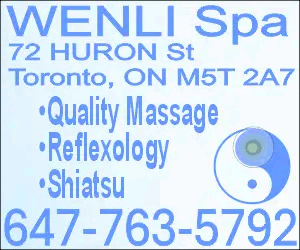
You know recovery is a hugely important part of your workout routine. After all, that's when your muscles actually rebuild what's been broken down during exercise. But with so many different recovery tools and methods out there, it can all get a little confusing. (Like, who knew cupping therapy isn't just for Olympic athletes?) Take sports massage—what the heck is it anyway? And how is it different from a deep tissue massage you see on spa menus?
"Sports massage actually draws from several techniques that may already be familiar to you, including Swedish massage, which improves blood circulation and oxygenation, and deep tissue massage, which targets and breaks up muscle knots and areas of tightness," explains Annette Marshall, licensed massage therapist with Zeel, an on-demand massage service that can have a massage therapist at your doorstep in as little as an hour.
Before your massage begins, your therapist will ask you a bit about about the types of activities you do, and then will focus specifically on the areas of the body most affected by that exercise. So if you're a runner, you can expect some hamstring love, and if you're big into CrossFit, your therapist may focus more on your back and shoulders. The various techniques can range from stretching and manipulating muscles to getting deeper into muscles with intense pressure.
"Because of the targeted nature of this technique, you will likely not receive a full-body massage, so for for body-wide aches and muscle knots you may prefer a deep tissue massage," advises Marshall. But you get an extra bonus with sports massage because it also incorporates stretching and an active range of motion, so it mimics exercise more closely.
Sports massage can be used before, during, and after strenuous athletic events, like a big race. But even if not training for an endurance event, anyone who is regularly physically active may experience the benefits of sports massage. Proponents of the technique say it can reduce muscle tension and pain, lower blood pressure, increase blood circulation and lymph flow, improve flexibility and range of motion, and improve muscle recovery time.
The scientific research on sports massage is still fairly unclear. One recent study in the Journal of Sports Sciences found that male bodybuilders recovered more quickly when they had a sports massage immediately after a training session, while another recent study from Cardiff Metropolitan University in Wales found that exercisers perceived no difference in muscle soreness when they received a sports massage following a plyometric workout.
Despite the cloudy research, if you enjoy massage and are an avid exerciser, a sports massage should at least feel good. "They're especially great if you're focused on a particular athletic pursuit—perhaps you've started lifting weights or taking CrossFit classes, or you're a serious runner—because your therapist will target a specific muscle group or groups based on your preferred athletic activity," says Marshall.
Your massage therapist can also show you self-maintenance techniques that will help your athletic endurance and performance between sports massages, like foam rolling and self-massage, so you'll be loosey goosey and injury free! (New to foam rolling? Get the scoop with these 10 Ways to Use a Foam Roller.)
Let's block ads! (Why?)









































































































